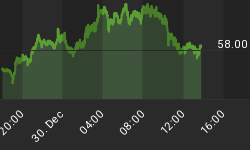It’s been a hell of a run, but as happens with all good things, this bull market must eventually come to an end. The current year is proving to be yet another annus mirabilis for the stock market, with the S&P 500 up 11% in the year-to-date.
However, a cross-section of pundits is now warning that a cyclical consolidation could be knocking at the door.
After all, the S&P 500’s reading of 4,185 has already exceeded Citigroup’s target of 3,800 for year-end by more than 10%.
Even more worrying, individual investors are more enthusiastic about the market than asset managers, and returns in subsequent years have usually lagged whenever households invest in the stock market as aggressively as they have.
According to Citi, household equity holdings now account for 47% of total assets, marking the highest share of their assets in stocks in more than 50 years. The last time retail investors were so heavily invested was back in 1970, which was followed by the S&P 500 annual return compounded over the next decade clocking in below 5%, way below the historical high single digits annual return.
Peering at a more recent timeframe reveals a similar trend: Returns declined into negative territory in the decade after 1999 when equity holdings relative to total assets peaked again.
Nobody is saying that a market correction is a foregone conclusion; rather, returns are likely to be unspectacular over the next several years.
Here are 4 tactical indicators to keep an eye on according to Bank of America strategists.
#1. Cash levels by asset managers
According to Citigroup data, net flow of money into U.S. mutual and exchange-traded equity funds has clocked in at ~ $100 billion so far in 2021. While that’s still decent, equity funds that focus on assets outside of the U.S. have actually attracted twice as much money. A big reason is that finding bargains in the U.S. market is becoming increasingly harder.
For a retail investor trying to guess the market’s next move, BAC says to look at cash levels by asset managers.
Institutional equity funds are, on average, currently holding a relatively low 4% of their portfolio in cash. BAC says any lower would be a sell signal while an increase to 5% would be a good buy indicator. That’s the case because the less cash funds hold, the less willing they are to use it to buy stocks.
#2. Bearish divergence on the relative strength index
According to the Wall Street bank, bearish divergences, or lower highs, on the hourly RSI are a sell signal. For instance, bearish divergences on the 14-hour RSI preceded 3% to 6% dips by the S&P 500 in late January, late February and again in late March.
BAC says this tactical price momentum indicator will have another negative divergence in late April.
#3. Drop on the Williams %R oscillator
Williams %R, also known as the Williams Percent Range or simply %R, is a momentum indicator that oscillates from 0-100 and is used to find entry and exit points in the market.
BAC says the 28-day Williams %R is currently overbought, with persistent overbought levels tending to coincide with a grind higher on the S&P 500.
Secular bull market
The good news, however, is that we are still very much in a secular bull market, meaning stocks are likely to rise more than they fall; drawdowns tend to be relatively shallow and recoveries from pullbacks relatively rapid.
In fact, JPMorgan says we could be smack in the middle of a 20-year secular bull market for equities that began in 2011.
JPM has backed the reflation trade to counter the Covid-19 speed bump, saying reflation trades are likely to come back stronger than they were to start the year. That will be marked by rising yields as well as rotations from growth, quality and defensives to cyclicals and value, starting from spring and accelerating in the summer.
By Michael Kern for Safehaven.com

















